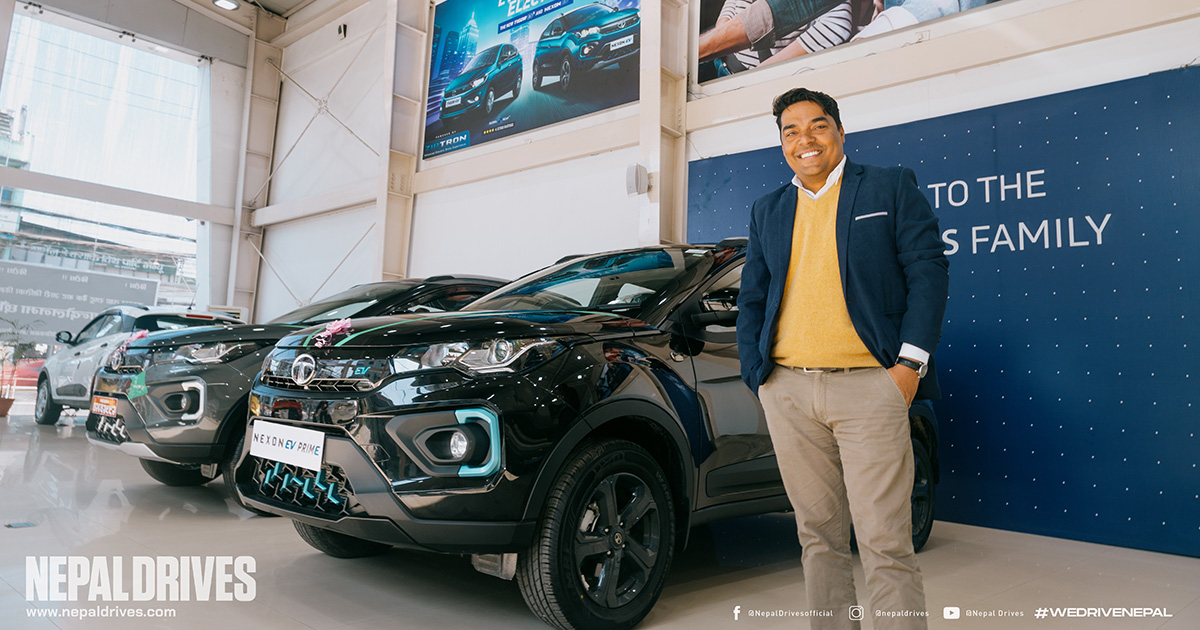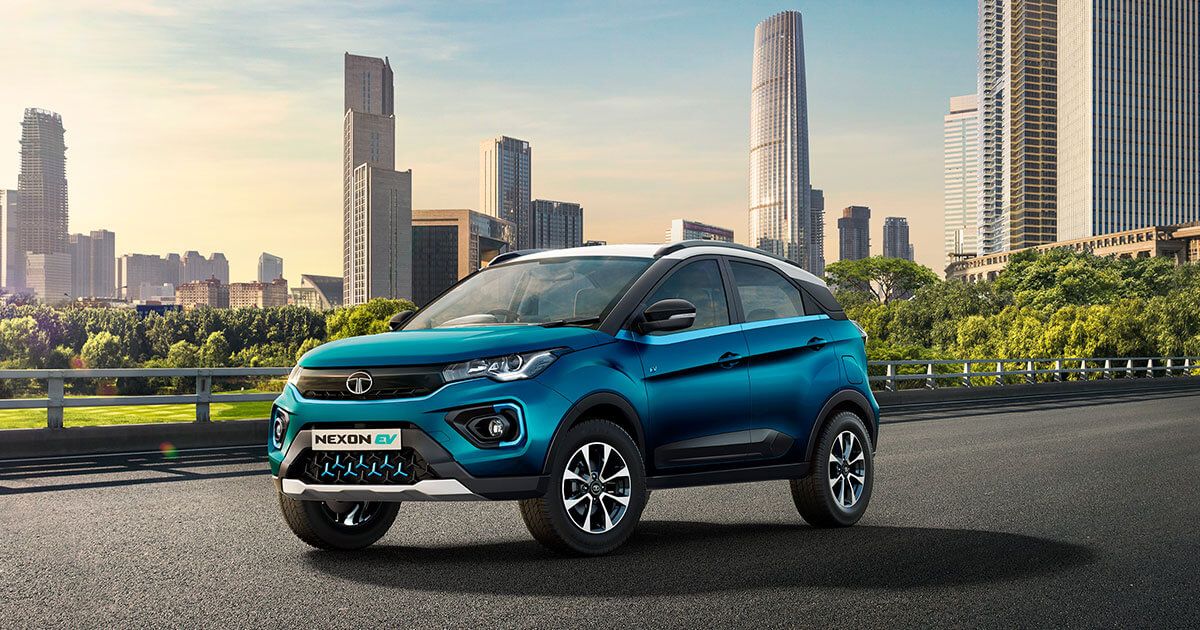How do you see Tata Motors' recent journey in the Nepalese market?
Frankly speaking, it has been very satisfying. We were predominantly in the semi-commercial sectors. The Tata Sumo was our main product and the customers didn’t see us as a passenger vehicle company. However, with the transition that happened over the past six years, we have now, all of a sudden become one of the biggest players in the passenger vehicle segment. The major part of that transition dates back to the last few years and the credit goes to a few major products.
One of them is the Tata Nexon ICE (Internal Combustion Engine) which was frankly a game changer for us. Following suit was the Nexon EV. When the EV race started, it was like a clean slate for us. We started at a market share of 10% ranking in fourth or fifth place, and now we are at a market share of 44% and rank in first place by a huge margin in the passenger vehicle segment.
Let me tell you that it's not by fluke. We now have the base to remain in the first position for the next three to four years. In that way, it has been a totally satisfying and successful tenure with the biggest credit going obviously to Tata Nexon. Without an excellent product, you cannot really do anything.
Apart from that, I would also like to give credit to Sipradi Trading. The support from Sipradi was commendable. They did not hesitate on doing what was right. When the Tata Nexon came in, we had to innovate in our marketing and branding. Sipradi readily supported our vision and that helped in shifting the customer's perception towards the company.
From 2018 onwards, we started changing the mindshare but customers were still hesitant regarding the brand and resale values, etc. Slowly, we innovated our marketing and worked on our weaknesses. After the pandemic, we increased our spending by more than five times on digital media which was a big help for this transition. Hence, the credit goes to Sipradi as well as our two blockbuster products, the Nexon ICE and Nexon EV.
Tata Nexon EV came with an affordable price tag at a time when there were mostly expensive EVs in the market. Do you think customers bought the Nexon EV just because it was affordable and there was no other choice or because it was a good product?
That is a great question. To the general public, it looks like a customer bought the Nexon EV because they didn’t have other options. But customers are clever, they look at their benefits. After the government changed the policies, the EV segment instantly became an attractive alternative. And to invest into new technology (that being the EV here), a customer needs a certain level of trust.
If you look closely, you will see that the craze for two-wheeler EVs is almost negligible. No one has been able to dominate that particular segment because you don’t have a main player. What I mean is that, until there is a main player in a new technology, customers will never really put their trust in that technology.
Tata, Sipradi, and Nexon have all established themselves as worthy names. This is one of the major reasons why our customers chose us. Secondly, we were well prepared. We had laid out all the groundwork related to the charging infrastructure and services to address range anxiety and other concerns even before we launched the product because we knew that one negative sentiment/comment/unfortunate mishap would completely spoil our product.
As you said, we have also hit a bull's eye with the pricing. Apart from that, the product specifications of the Nexon EV resonated in perfect harmony with the requirements of our customers. These requirements make the Nexon EV a great alternative for existing ICE owners who move within the city at a speed of 30-40 km/h and do around 40 km a day without any issues.
Will the customers choose a product that can drive up to 600 km and cost a crore? No, because no matter how long range it gives it still won’t be your primary car, at least not in the first year. Our EVs were in a sweet spot in terms of range; you can charge twice a week for city driving and still get more than required. Since our battery is small, the charging time is also faster which people don’t really think about. Try charging a 500-km range EV at your home. You come home at 10-11 pm at night, plug that car in and it will still be around 30% when you leave for the office at 9 am the next day. The Nexon EV will be at 100% charge by then.
All these things, the product, infrastructure, product features, and ground clearance made the Nexon EV a popular choice. We made sure that our customers didn’t face any issues. We went far as installing AC charging ports in the customers’ homes along with earthing all free of cost. Because if there’s no earthing and the car fails to charge, the customer will place the car at fault rather than the lack of earthing in their home.
I think these are the reasons why the Nexon EV became a blockbuster success.
Now that Tata Motors is moving to a completely different segment, what is the roadmap going forward in the Nepalese market? For a brand to sell more than 2000 units of an EV within one year is a big accomplishment in itself. I see the EV market going upwards by more than 70% in the coming years. The change is inevitable until and unless the government does something completely negative to slow it down. And for the government to do something negative, it is difficult as well.Our fuel import bill reached up to Rs. 1 Billion per day (quoting from the recent stats) with automobiles being the major contributors. We get dollars via remittance but are spending a big chunk of it on purchasing fuel only. Hence, I don’t think the government will pass rules that will discourage the adoption of EVs.
Secondly, in Nepal… 60% of the volume is in Kathmandu, i.e. everything is Kathmandu-centric. The Kathmandu market accounts for more than 60% of all domestic markets. The main question for EVs outside Kathmandu is whether the car can reach Kathmandu or not and vice-versa. The distance from Kathmandu to Pokhara is around 200 km, Birgunj is 160 km or 220 km depending on the route you take, and Janakpur is around 250 km. What I am trying to say is that the radius is only 250 to 300 km. If you have a product that returns a real-world range of 250 km, then it becomes your primary car, you don’t need an ICE vehicle. I guess that is one of the benefits of a small country like ours, you don’t even need to install that many fast chargers. Hence, in that aspect, EVs are ideal for Nepal.
The third is the cost of ownership. EVs are generally cheaper than their ICE counterpart. On top of that, you will save around Rs. 25 Lakh after 8 years of ownership. Along with the affordability, the driving pleasure is also high as per our customer feedback. If you drive an EV for a month, you would not want to go back to ICE. So, why wouldn’t you buy an EV?
Regarding the 2000 units of Nexon EV that Tata has already sold, and the EVs that Tata and Sipradi are planning to sell in the future… how are you addressing the infrastructure requirements of your customers?
Another great question. We started out with 15 fast chargers before last Dashain. Dashain is a season of peak travel, so we decided to install chargers at each strategic point and we went up installing up to 19 chargers. Now, as the number of EVs on the road is increasing, the government is also installing its own chargers. The government has already installed 20 chargers and 50 or so are already in the pipeline. Our 19 chargers, plus 50 more from the government, and the extra chargers we are planning to add in the coming months, should handle the charging needs for the current scenario.
Sometimes what happens is that chargers at a particular location see the highest number of EVs once or maybe twice a year. During a peak season, the same charger might see four cars in the queue every day while the rest of the year it will see only one car per day. This results in a very low monthly average. Hence, our challenge is to manage the network during the peak period.
Also, you will get to see EVs with a longer range in the future. This means the demand for the number of chargers will not rise even if the number of EVs in the market multiplies. But, as more people switch to EVs, we will not hesitate to expand our sales, service, and charging network.
In a price-sensitive market like ours, what goes inside a customer’s mind who is making the switch from an ICE to an EV? Do you think the Chinese EVs are taking away a big chunk of potential customers? Are they a major competition?
“I do not want to be one of the first owners of a brand I have never heard of before, but I would be one of the first owners of a Nexon because it is a proven product.” This is what goes inside a customer’s mind.
Regarding the EVs from unrecognized brands, only a few people will buy them. Apart from the occasional influx, I don’t think anyone can challenge us until they can match our aftersales service. You have to have a robust strategy for establishing a product and matching the customers' requirements. Your experience with the car and the brand starts right after buying a car. Hence, establishing a robust aftersales service is a huge task. On top of that, setting up an efficient charging infrastructure is equally difficult. The very few customers who’ve bought an EV from a non-established brand have a good chance of having a bad ownership experience too.
On top of that, we are even building a battery repairing centre at a huge expenditure. Advanced equipment and equally advanced manpower are required to cater to vehicles that are essentially new-age and establishing all of that right here in Nepal is a feat that is hard to accomplish.
Where do you see the challenges for Tata Motors in Nepal?
I think the entire Nepalese auto industry is heading towards an EV future and that poses a big sustenance challenge to ICE vehicles. It is expensive to buy, costly to run, and even more expensive to maintain. And it still doesn’t deliver a driving experience better than an EV. If a brand is fully dependent on ICE vehicles, it will be challenging for them. Tata will also see pressure on its ICE vehicles in the near future but we are fully prepared to tackle it.
Secondly, it will be challenging to keep innovating to tackle the competition. Once you hold a bigger slice of the pie, your rivals will come right after you. So, innovating and expanding to maintain your slice will prove to be a big challenge. Third, it will be matching customers’ expectations with the right after-sales service including the charging network
Are the high-interest rates charged by financial institutions proving to be a major setback?
Yes. The auto industry collapsed by more than 70% and it wasn’t because of the import ban. If the import ban was the issue, the available units here would have all been sold. If you ask us, as an OEM, we lost some volume, but this is better for the long term because the units that were already here aren’t selling. This is a huge challenge. The risk-weightage ratio that is present has to go away, if it doesn’t, it will invite trouble for a lot of OEMs. Interest rates on the other hand will go down as soon as liquidity flow increases. As cars are an aspirational product, the government has to work on the risk-weightage ratio and the OEMs have to work on bringing their customers back.












